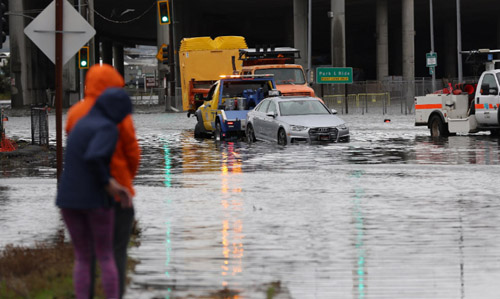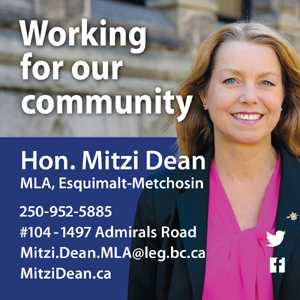Monday March 25, 2024 | VICTORIA, BC
by Mary P Brooke | Island Social Trends
While taking immediate steps to support communities and to keep people safe, the BC government is launching a new comprehensive BC Flood Strategy that will guide flood preparedness and mitigation work by all orders of government from now to 2035.
The strategy will support communities to better prepare for flood impacts and strengthen their ability to respond to flood crises.
Meanwhile, grants have been issued to 38 communities, announced last week.
Funds were administered through the Community Emergency Preparedness Fund of the BC Union of Municipalities (UBCM). The Province has invested $369 million into the CEPF since it was established in 2017. Funds are issued for:
- Disaster Risk Reduction-Climate Adaptation
- Emergency Operations Centres Equipment and Training
- Emergency Support Services Equipment and Training
Three categories:
Applications were submitted within three categories:
- Category 1 (C1): Foundational activities (risk mapping, risk assessments, planning)
- Category 2 (C2): Non-structural activities (land-use planning, community education, purchase of eligible equipment)
- Category 3 (C3): Small-scale structural activities
South Vancouver Island:
In the Victoria area, the Songhees Nation – Lekwungen Nation’s Rock Bay Planning Project received $149,992 (Category C1).
- “Knowing the risks of future sea levels rising, the Songhees Nation’s work to plan for and adapt to the changing climate will help make the community stronger and more resilient,” said Grace Lore, MLA for Victoria-Beacon Hill.
In the west shore area, the City of Colwood received $300,000 for disaster-risk planning and reduction (Categories C1 and C2). Colwood has oceanfront shoreline areas and would be susceptible to tsunami flooding as well.
- “People in Colwood will be safer and better taken care of in the case of an emergency with this funding for further disaster-risk planning and reduction measures,” said Mitzi Dean, MLA for Esquimalt-Metchosin. “This will make everyone in our community better off in an emergency.”
- Over the next two years the City of Colwood will be engaging with residents to help us conduct a Community Risk Assessment, develop Disaster Risk Reduction Strategies and Policies, create a Mental Health Resilience Strategy, and develop related public education and outreach tools.
- Throughout the next two years, staff and elected officials will be undertaking specialized training to increase knowledge, skills, and informed decision-making.
- It will support the development of tools to guide staff in advancing the design and implementation of effective nature-based solutions for climate action, including disaster risk reduction.
Province-wide:
The 38 communities that received flood disaster mitigation funding (over 50 projects) are:
Cache Creek, Chase, Clearwater, Columbia Shuswap Regional Disrict, Courtenay, Cowichan Tribes, Cowichan Valley Regional District, Creston, East Kootenay Regional District, Fraser-Fort George Regional District, Ka:’yu:’k’t’h’/Che:k’tles7et’h’ First Nations (Kyuquot), Kitimat, Kootenay Boundary Regional District, Ladysmith, Langley Township, Leq’a:mel First Nation, Maple Ridge, New Westminster, New Westminster’s Urban Biodiversity Enhancement Initiative, Okanagan-Similkameen Regional District, Oliver, Osoyoos, Parksville, Pauquachin First Nation, Penticton, Port Moody, Pouce Coupe, Richmond, Songhees Nation, Squamish Nation, Strathcona Regional District, Surrey, Thompson-Nicola Regional District, Tk’emlúps te Secwépemc, Tseshaht First Nation, Vancouver, Vernon, Warfield.

===== RELATED:
NEWS SECTIONS: COLWOOD | EMERGENCY PREPAREDNESS | POLITICS | VANCOUVER ISLAND






